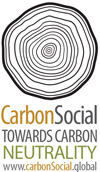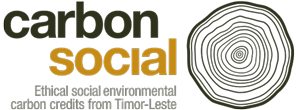
What is a Carbon Credit?
Most carbon credits are issued in compliance with the Kyoto Protocol Mechanism. The vast majority of carbon offset projects are located in Asia, Africa and the Americas. For a carbon offset to be accredited within the Protocol, it has to meet crucial criteria, including:
Additionality – The emission reduction would not have occurred in the absence of the project
Permanence – The project actually delivers the claimed emissions reductions
Leakage – The emissions reduction achieved with the project does not lead to an increase in emissions elsewhere
Retirement – Following the sale of the carbon credit, it is permanently removed from the market mechanism, ensuring that the offsets have a clearly registered ownership and that they can never be sold again (ie. no double counting)
What is the legal structure for CarbonSocial credits
A CarbonSocial credit is the name of the carbon credits, verified by the Gold Standard, from a community forestry program called WithOneSeed under the auspice of the xpand Foundation.
Where does revenue from the sale of CarbonSocial credits go.
All income from the sale of CarbonSocial credits goes to support the farmers on whose land the trees are planted.
What certification standard does CarbonSocial use
CarbonSocial has been certified under the Gold Standard Foundation Aforestation/Reforestation certification. CarbonSocial credits are verified carbon credits.
How do I know what carbon offsets to purchase?
When buying carbon offsets, choose companies that adhere to the strictest standards, including third-party 1) certification, 2) verification and 3) auditing of projects that are:
- Real – offsets that have already occurred.
- Additional – offsets that would not have occurred without the offset project.
- Permanent – lasting or guaranteed to be replaced should losses occur.
- Verifiable – offsets that can be quantified, monitored and verified.
What information should be included on my carbon offset certificate?
As outlined by the American Carbon Registry, a carbon offset certificate should include a serial number unique to the offset, as well as total tonnage purchased, the verifier’s name and signature, the project location, the owner’s name and address, and a vintage date.
Are CarbonSocial credits tax deductible?
The purchase of trees or offsets by a business may be a tax-deductible business expense but businesses will need to seek their own independent tax advice. For some, it’s a marketing or branding expense to create a point of difference, or to demonstrate to customers they are doing something to help the environment.
Where do CarbonSocial credits come from?
CarbonSocial credits are sequestered by the new forests in Baguia, Timor-Leste. Over 750 smallholder subsistence farmers are growing high-quality hardwood trees and are earning an income from the sale of CarbonSocial credits.
What is the voluntary carbon market?
In the Voluntary Market, organisations volunteer to offset their carbon emissions by purchasing carbon credits that reduce the amount of CO2-e in the atmosphere. They do not have any legal or other obligation to offset their organisational carbon emissions. Companies may choose to offset because the activity aligns well with their Corporate Social Responsibility policies, supply chain or procurement pressure, staff engagement or marketing strategy or is simply something they want to do.
Once I have offset my emissions, am I or is my organisation then carbon neutral forever?
No, because our everyday activity will continue to emit emissions. The average as long as it operates. Offsets must be purchased at least once every twelve months so that you can maintain your ‘carbon neutral’ status on a continuous basis.
What trees are planted?
Species planted include Mahogany, Teak, Sandalwood, Rosewood, Casuarina and Eucalyptus.
Where are the trees planted?
Trees are planted in the mountains around the sub-district of Baguia in the District of Baucau, Timor-Leste. Trees are planted on smallholder subsistence land. The land suffers from significant degradation and erosion.
Who owns the trees?
The trees are provided to the farmers at no cost and are owned by the farmer on whose land they are planted. A farmer can in many instances double their annual income from maintaining the trees.
What is the verification process?
Trees are GPS located on every anniversary after the first year of planting. This allows very accurate records of survival rates. Growth rates are calculated biannually. A full Gold Standard verification audit is required every five years.

